Affiliate disclosure: This post may contain affiliate links. Please see our Privacy Policy.
Citrus fruits are a great natural pectin source for home canning, and many “no added pectin” recipes actually add natural citrus pectin in the form of lemon juice.
While citrus juice has a good bit of pectin, citrus seeds contain even more natural pectin that’s perfect for making homemade jam without store-bought pectin.
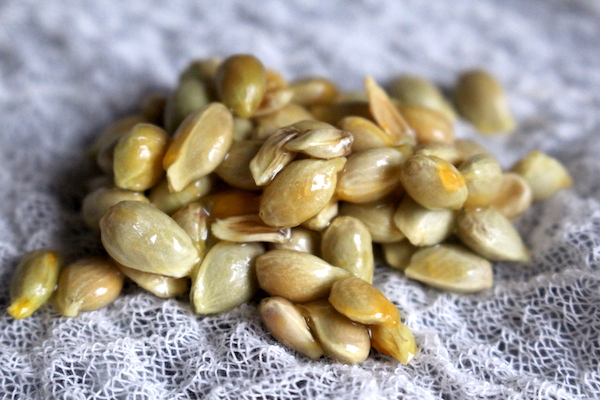
I love the idea of making homemade jams and jellies without having to buy storebought pectin. We sweeten our preserves with home-harvested honey or our own homemade maple syrup and learning to make my own natural pectin has been on my canning bucket list for a while now.
I’ve seen plenty of recipes for extracting pectin from apples, basically making super-concentrated apple jelly. That apple jelly is then added a few cups at a time to other low pectin fruit preserves.
It creates a good firm set, but it also adds a lot of apple flavor to the finished jam. Thus far, I’ve avoided it because I prefer the clean taste of storebought pectin since it doesn’t add any flavor whatsoever.
I generally make low sugar jams, so my preferred store-bought pectin is Pomona’s Universal Pectin which works wonderfully in low sugar and no sugar recipes. At some point, I looked up how it’s made and learned that it’s a natural citrus-based pectin. That got me thinking…can I make my own natural citrus pectin?
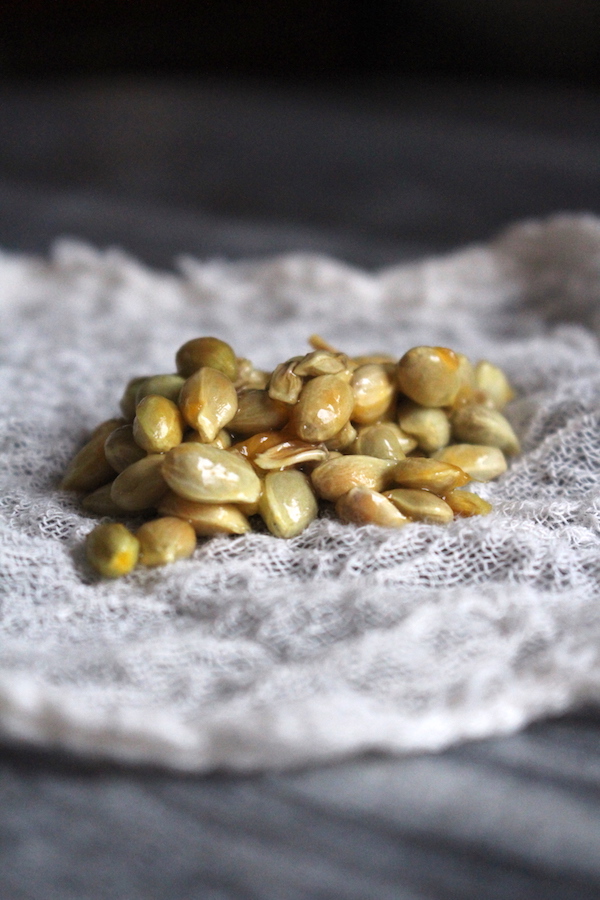
I started doing a bit of research into natural pectins, and learned that citrus fruits are loaded with pectin. Adding lemon juice to “no pectin added” jams actually adds a significant amount of pectin, and while it’s added mostly to increase acidity which makes the jam taste better…it’s actually helping it gel at the same time.
While citrus juice naturally helps jams gel, citrus seeds can be used as a natural pectin replacement. Several sources mention that you can actually see this in action by placing a few lemon seeds in a small amount of water overnight.
They say that it’ll be gel by the morning. I tried this, and no luck, it didn’t gel. What does work, however, is simmering the seeds in juice or water to create a pectin concentrate.
Since this test, I’ve made dozens of jellies and jams using citrus seeds as the pectin source. For jellies, simply simmer the seeds in the juice for about 30 minutes, then strain out the seeds and any fruit matter in a jelly bag. Then add sugar and finish the jelly. Thus far, I’ve used this method with success for moderate pectin fruits like chokecherries.
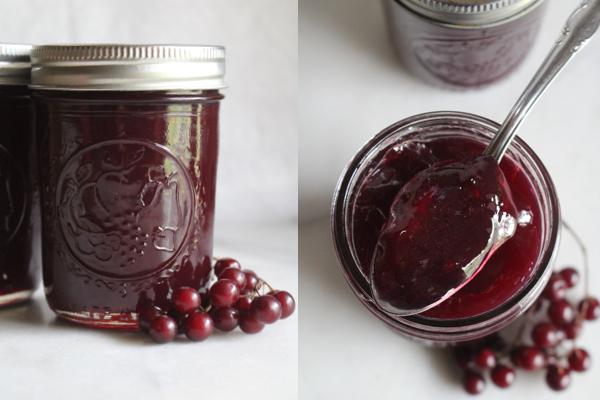
For low and no pectin fruits/vegetables, there’s also a good method I’d suggest. Start by simmering about 10-15 lemon seeds in about 2 cups of water for about 30 minutes (for every half pint of jam in the finished recipe).
The water will reduce to about 1/2 cup. At this point, it should visibly look like it’s gelling. Strain out the lemon seeds and add that mixture to the canning recipe in place of pectin.
I’ve done this for a zucchini jam, made with this pectin along with a small amount of lemon juice and a bit of lemon zest. Keep in mind you’ll need about 10-15 lemon seeds for every pint of finished jam, and adding the lemon juice and a bit of zest also really helps things gel.

For chunky jams instead of jellies, adding a sachet of citrus seeds in cheesecloth is an incredibly effective method.
Tie a tablespoon or two of citrus seeds in a bit of cheesecloth and add it directly into the jam pot. As the fruit simmers, the natural citrus pectin will be extracted from the seeds into the jam.
An even better option is to combine the two techniques and place all the jam ingredients together a few hours (or up to 24 hours) ahead of time. If you’re making strawberry jam, for example, add the sugar to the strawberries and then toss a sachet of citrus seeds into the bottom of the bowl.
The sugar will extract liquid from the strawberries, and then the citrus seeds will release pectin into this water. After that initial maceration period, place everything into the jam pot and start it simmering.
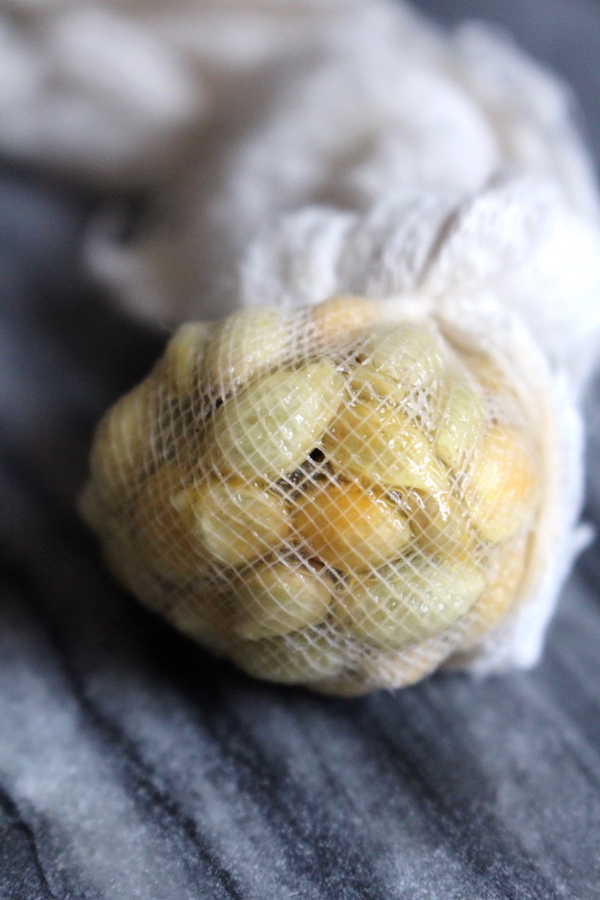
This is a great natural gelling agent for citrus jams obviously, and it’s what I used when making this kumquat jam.
Often though, jam making doesn’t directly involve a lot of citrus fruit. In that case, it’s best to save up citrus seeds in the freezer throughout the year. In the winter, we make a lot of limoncello (lemon liqueur) for summertime sipping, and I’m now saving the seeds from those lemons for use in my summer jams as well.
Anytime you use a lemon, orange or lime remember to save the seeds and you’ll have a good supply before you know it.
More Ways to Use Citrus
Looking for more ways to preserve with citrus? Here are a few tasty canning recipes, as well as small-batch wine and more…
- Canning Lemons (3 Ways)
- 20+ Ways to Preserve Lemons
- Lemon Wine
- Salt Cured Lemons
- Canning Lemon Curd
- Canning Oranges
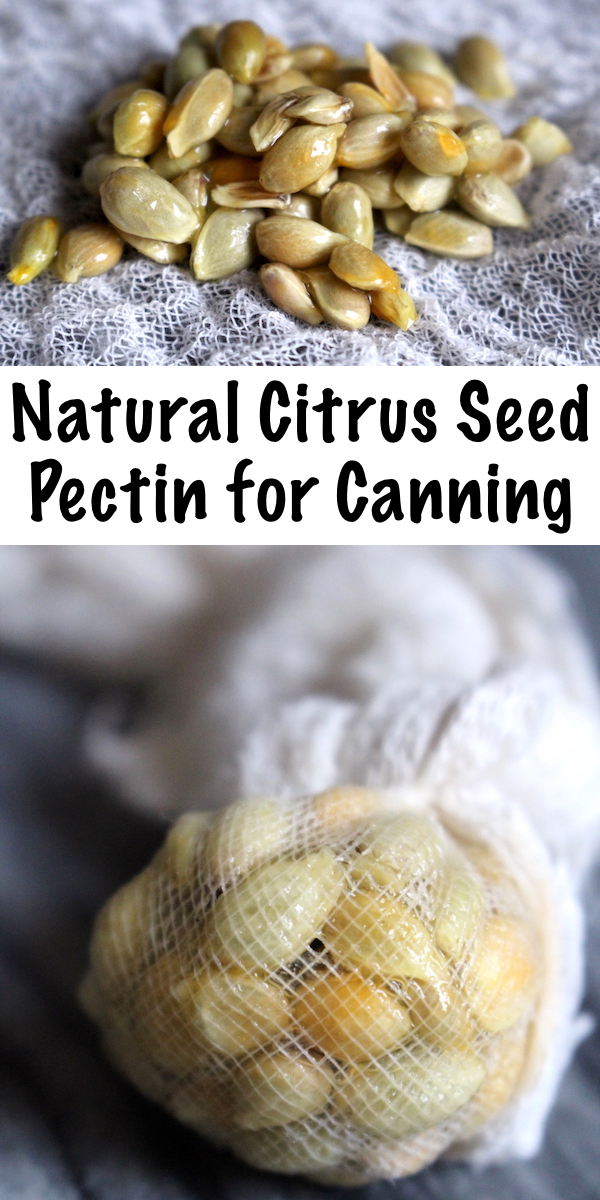

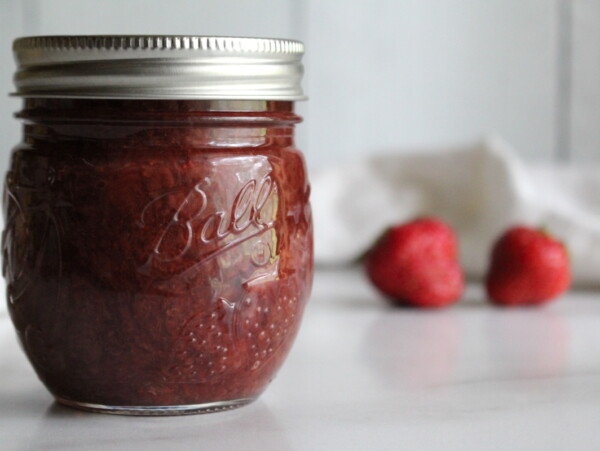












Since I found this pin last year, I have made Strawberry, & Strawberry Rhubarb & Plum Rhubbarb jam. I just put a tea ball of lemon seeds simmering along with the jam recipe. I use low sugar as well. Today I am trying the Blackberry Jam recipe adjusting to Blackberry Jelly. I will add a tea ball of lemon seeds though you recommend not needing it. Thanks for your great work!
Lovely! I’m making blackberry jelly and raspberry jelly today myself too!
Thanks for sharing this idea. I had read about it before but did not give it much thought, now I am set to do it this way.
Kind regards from NZ
Edward
You’re very welcome. So glad you enjoyed the post.
Great information! Have you ever used crabapple for pectin?
I haven’t personally used them in that way but they were often traditionally used for their high pectin levels.
What a wonderful resource this is!! I just made my first batch of wild black raspberry jam using your 3 ingredient recipe and wow how good it is. The next batch I will use the lemon seeds in cheesecloth just to get it to gel up a little better but it’s really good as is now. My children and grandchildren think I’m amazing but I was sure to give you the credit. May God bless you and your family. I can’t wait to learn more and keep growing using the resources that grow in my garden and in my forests. Thank you again have a blessed day.
That’s so wonderful. I am so glad that you are enjoying the blog. You’re very welcome.
Thank you so much for sharing this. I’m allergic to apples and oranges (lemons and limes are distantly related and don’t cause any allergic reactions for me) so I can’t eat regular pectin. I have tried my hand at homemade jams, but it’s been difficult to get them to gel enough which limits what jams I can make and requires me to use more sugar. I can’t wait to try this. Thanks again.
You’re very welcome. We’re so glad it was helpful.
You state: “many “no added pectin” recipes actually add natural citrus pectin in the form of lemon juice.”
Lemon juice has very little pectin, if it has any. It is used to lower the pH of the jelly, which helps any pectin that is present to gel.
The white pith or inner part of citrus peel has a lot of pectin.